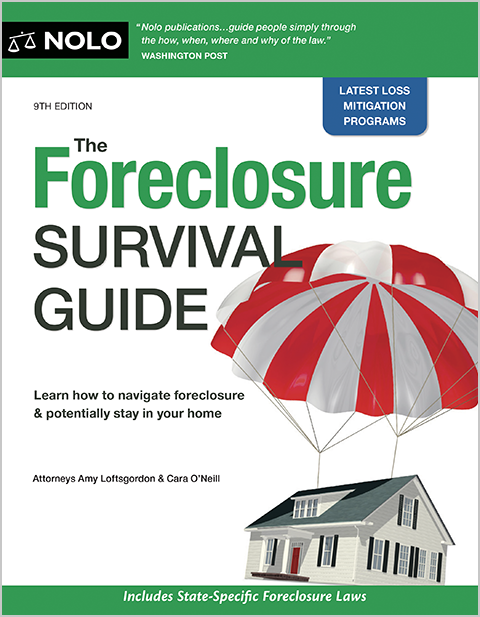Learn about your rights as a renter under the federal Protecting Tenants at Foreclosure Act (PTFA).
The federal Protecting Tenants at Foreclosure Act (PTFA) ensures that if you're renting a home that goes through foreclosure, you'll have enough time to find a new place to live. Under this law, tenants may stay in the property for the duration of an existing lease or at least an additional 90 days after a foreclosure, depending on the circumstances.
Your state's laws might even give you some more time to remain in the home.
What Is the Protecting Tenants at Foreclosure Act (PTFA)?
Before the PTFA, most renters, even those with leases, had to move out of a rented property after the landlord went through a foreclosure. Eviction following the foreclosure usually happened rather quickly because of a common rule in most states: the "first in time, first in right" rule
First in Time, First in Right Rule
Under this general rule, if a mortgage or deed of trust was recorded before the lease, a foreclosure wipes out the lease. So, tenants in foreclosed homes became month-to-month renters, and the new owner could terminate the tenancy after providing proper notice under state law.
PTFA Enacted to Give Protections to Renters
After the foreclosure crisis began in 2007, millions of homes went into foreclosure, and tenants often found themselves quickly put out on the street. To assist tenants in this predicament, President Obama signed the PTFA into law on May 20, 2009. Once the PTFA went into effect, a bank that took over a property after the landlord failed to make the loan payments was no longer able to kick the tenants out right away. But the PTFA expired on December 31, 2014.
The Economic Growth, Regulatory Relief, and Consumer Protection Act (S. 2155), signed into law on May 24, 2018, repealed the PTFA's sunset date. As a result, the PTFA's protections for renters after a foreclosure went back into effect permanently as of June 23, 2018.
Overview of Tenant Rights Under the PTFA
The PTFA provides protections to bona fide tenants who have a lease and those who don't, like month-to-month renters.
Lease Rights: Staying Until the End of Your Lease
In most cases, tenants who enter into a bona fide lease before the notice of foreclosure may stay in the home until the end of the lease term. But if the buyer who purchased the property at the foreclosure sale intends to move into the home, that buyer may terminate the tenants' lease after giving 90 days' notice. (12 U.S.C. § 5220, notes (2025).)
Who Qualifies as a Bona Fide Tenant Under the PTFA?
The PTFA defines a "bona fide tenant" as a person in possession of the property (with or without a lease) if:
- the tenant isn't the mortgagor (borrower) or the child, spouse, or parent of the mortgagor
- the lease or tenancy was an arms-length transaction, and
- the rent isn't substantially less than the fair market rent for the property (or the unit's rent is reduced or subsidized due to a federal, state, or local subsidy).
Tenant Protections for Month-to-Month or No Lease Agreements
Renters who don't have a lease, such as month-to-month renters, or those with a lease that can be terminated at will, get 90 days' notice before having to move out of the property.
Importantly, the PTFA also provides that if state law gives a more generous amount of time for renters to stay in the home, that longer period applies.
How State Laws Provide Additional Renter Protections
In the years after the PTFA expired, some states, like Illinois and North Carolina, implemented their own versions of the law to protect tenants after a foreclosure. Usually, state laws that provide protections to tenants after a foreclosure are pretty similar to the PTFA.
Under Illinois law, for instance, the new owner may terminate a bona fide lease at the end of the lease term by giving the tenants at least 90 days written notice. However, like with the PTFA, if the new owner intends to occupy the property as a primary residence, the owner can end the lease by giving no less than 90 days written notice. In the case of a month-to-month or week-to-week lease, the new owner may terminate the lease by giving at least 90 days written notice. (735 Ill. Comp. Stat. § 5/9-207.5 (2025).)
Get Help From a Lawyer
If you're renting a home going through foreclosure or have already been foreclosed and need help enforcing your rights under the federal PTFA, consider talking to an attorney. An attorney can also advise you about state laws providing additional protections beyond the PTFA.
Also, a lease-holding tenant who must move out so the new owner can move in might consider suing the former landlord in small claims court. An attorney can tell you more about options for your particular circumstances.

